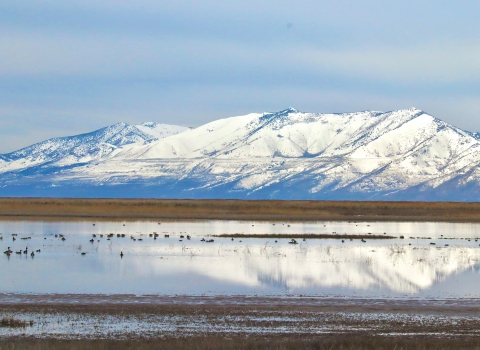The U.S. Fish and Wildlife Service is seeking public comment on a proposed rule to designate 554,454 acres of critical habitat for the southern Sierra Nevada distinct population segment (DPS) of fisher. The proposed critical habitat would be located across portions of Fresno, Kern, Madera, Mariposa, Tulare and Tuolumne counties in California.
Fishers are medium-sized mammals classified in the same family as weasels, mink, martens and otters. The southern Sierra Nevada DPS of the species was listed as endangered under the Endangered Species Act in 2020.
“The Service is committed to recovering this species, and identifying critical habitat is a crucial step,” said Michael Fris, field supervisor for the Service’s Sacramento Fish and Wildlife Office. “This designation will enable us to work more effectively with federal partners, state agencies, Tribes and private landowners to successfully manage land for positive conservation outcomes for the fisher.”
Most of the proposed critical habitat falls on federal lands managed by the U.S. Forest Service and National Park Service. Both agencies have land use management plans in place that limit disturbance to denning fishers and conserve habitats used by the species to find food and raise kits. The designation of critical habitat would not affect land ownership or establish a wildlife refuge, wilderness reserve, preserve or other conservation area conservation area
A conservation area is a type of national wildlife refuge that consists primarily or entirely of conservation easements on private lands. These conservation easements support private landowner efforts to protect important habitat for fish and wildlife and major migration corridors while helping to keep agricultural lands in production.
Learn more about conservation area .
Habitat loss and fragmentation resulting from catastrophic wildfire is one of the biggest threats to the species. Tree mortality and prolonged drought are also a concern. The Service supports land management activities that contribute to healthy forest ecosystems and reduce the risk of wildfire. Through collaboration with federal and private partners, these activities can be conducted while maintaining habitat components that the species requires for successful reproduction and foraging.
Other activities that are essential for fighting fires, such as road maintenance, removing hazard trees and vegetation management activities along utility lines would also continue if critical habitat is designated.
The southern Sierra Nevada DPS of fisher is estimated to consist of 100-500 individuals. The species can be found in low to mid elevation coniferous and mixed conifer and hardwood forests from the Tuolumne River in Yosemite National Park south to the Greenhorn Mountains within the Sequoia National Forest. Both male and female fishers roam large distances and females use tree cavities for denning.
The proposed critical habitat rule will publish in the Federal Register on October 19, 2021, opening a 60-day public comment period. The Service will consider comments from all interested parties received by December 18, 2021. The proposal, legal boundaries, GIS shapefiles and information on how to submit comments can be found on www.regulations.gov by searching under docket number FWS-R8-ES-2021-0060.
The U.S. Fish and Wildlife Service works with others to conserve, protect and enhance fish, wildlife, plants and their habitats for the continuing benefit of the American people. For more information about our work and the people who make it happen, visit www.fws.gov/Sacramento. Connect with us via Facebook, Twitter, YouTube and Flickr.
-FWS-


